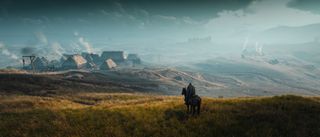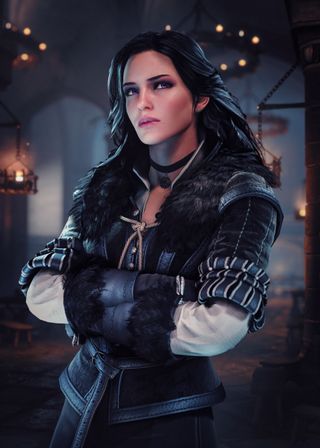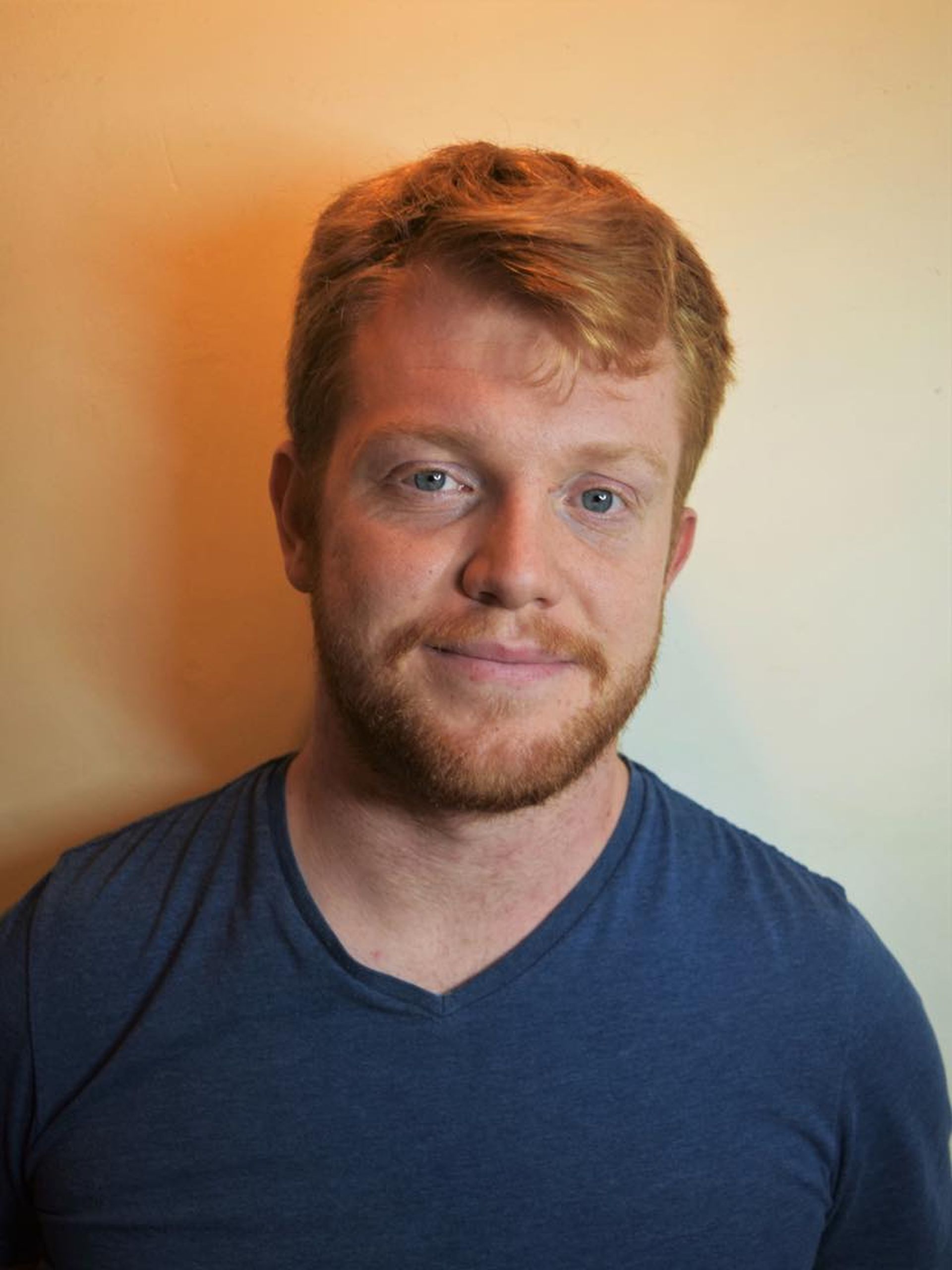I've always felt that one of the core strengths of The Witcher 3 is the way that it makes its world feel so full of life. NPCs hustle and bustle through the cities of Novigrad and Oxenfree, but CDPR keeps that feeling up as you wander through White Orchard, or discover a tiny Skelligan hamlet, or uncover the aftermath of a destructive battle.
It's those discoveries, those moments, that I was reminded of when I came across the work of Nemanja on Twitter. A VFX artist by day, Nemanja says that a single piece of their virtual photography "can take anywhere from four to eight hours of work" to set up - most of that time spent simply coming up with the right character in the right pose in the right spot.
Nemanja's recent journey through The Continent is a fascinating one. One set of photos strips Velen of much of its vegetation, turning its arboreal No Man's Land into rolling grassland punctuated by its inhabitants' efforts to tame it.

Stripping Velen of its thousands of trees required modding, something that Nemanja says is an "essential" tool. Sometimes, those mods are used for composition, but they're also used to push a game's graphics to "the absolute maximum, even above what in-game options provide." That lets the image resolution come out at above 8k, but has a big impact on frame-rate: "I'll often have the game running at less than 5fps at the moment I'm pressing print-screen. But as we like to say - 'you only need 1fps to capture a shot'."
The use of the term 'print-screen' surprised me, as I'd assumed Nemanja was taking their Witcher 3 screenshots using the game's photo mode, added in with the recent PS5 and Xbox Series X upgrade. Instead, the shots are usually captured using a suite of other mods and camera hacks - key to capturing the "uniqueness" that Nemanja says is a "main pillar" of their process.

Positioning is also key. Even if the photo is a relatively simple portrait, like the one of Yennefer, above, Nemanja says that "I try to place them in an appropriate environment. Each shot will most likely have a story it's trying to tell, and that would be the first, and most important guideline in looking for a setting in an open-world game."
Of the Witcher 3 photography, my favourite is the battle scene between Nilfgaard and Redania - it's something about the way the light captures the rearing horse in the centre of the shot that gives it a real neoclassical feeling - but Nemanja says their favourite "is always the last one. Because I put so much time into every single shot, I tend to get overly attached to it. If it’s not even marginally better than the "standard" I’ve set currently, I’ll quickly discard it, often during the shooting process itself."

That's a lot of potential work down the drain, not least because of the difficulty of capturing some scenes. Action shots are particularly tricky - "a lot of time can be spent on trying to timestop the game at the exact right moment" - add a second or third character, and the choreography is much harder to establish, although you wouldn't know that from a picture of Geralt battling a Griffin in-flight, all while standing on its back.
Another issue Nemanja faces is compression - their Twitter doesn't really show off those 8K screenshots in their full glory - so you can check out their work as it was meant to be seen via their Flickr account. While it's The Witcher 3 that drew me in, Nemanja's other recent work includes Days Gone, Marvel's Spider-Man, and plenty of Resident Evil, so you're almost certain to find something to suck you back into your favourite game again.
They're still years away, but perhaps this is The Continent that The Witcher 4 and The Witcher Remake could realise.


